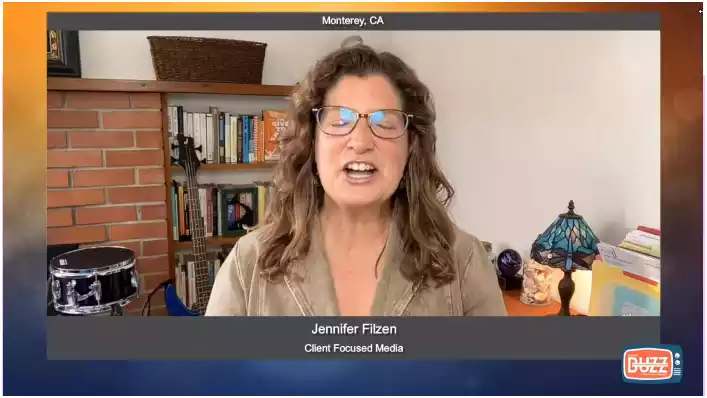Mastering Prior Authorization Compliance: Strategies for Success
Unlock the secrets to mastering prior authorization compliance. Learn effective strategies to streamline your processes, reduce administrative burdens, and improve patient care. Read more to stay ahead!

With streamlined systems in place, understanding what does getting prior authorization mean becomes straightforward. Prior authorization is a process where healthcare providers must obtain approval from a patient’s insurance company before proceeding with specific treatments, tests, or medications. This ensures that the proposed care is covered under the patient’s insurance plan and meets the insurer’s criteria for medical necessity. Let’s explore the steps involved in obtaining prior authorization, its importance, and how it impacts both patients and healthcare providers.
Let’s dive in!
Table of Contents
Mastering Prior Authorization Compliance
 Prior approval plays a role in the healthcare system, requiring healthcare providers to seek permission from insurers before offering medical care, procedures, or medications. The goal is to ensure the proposed treatment is medically necessary and covered by the patient’s insurance plan. While the main aim of authorization is cost control and avoiding treatments, it often presents complex challenges for healthcare providers, insurers, and patients. This article explores compliance with authorization, discussing its significance, obstacles faced, and recommended strategies.
Prior approval plays a role in the healthcare system, requiring healthcare providers to seek permission from insurers before offering medical care, procedures, or medications. The goal is to ensure the proposed treatment is medically necessary and covered by the patient’s insurance plan. While the main aim of authorization is cost control and avoiding treatments, it often presents complex challenges for healthcare providers, insurers, and patients. This article explores compliance with authorization, discussing its significance, obstacles faced, and recommended strategies.
Significance of Prior Authorization
Cost Management
Cost management is a key driver behind prior authorization requirements. Insurance companies can assess the need for the requested service by mandating approval before procedures occur. This step helps reduce potentially ineffective treatments, ensuring the utilization of healthcare resources.
Promoting Quality Care
Another crucial authorization aspect is ensuring that prescribed treatments adhere to established standards and best practices. This process prevents harm to patients from unsuitable interventions and helps identify alternative treatment options that might be more effective or cost-efficient.
Ensuring Regulatory Compliance
Adhering to authorization requirements is not just good practice but is often necessary due to healthcare regulations and payer guidelines. Non-compliance can lead to claim denials, which can have a significant financial impact on healthcare providers and create obstacles for patients seeking care.
Improving Operational Efficiency
Management of authorization procedures can enhance the efficiency of healthcare operations. Healthcare providers can lessen tasks and improve operational effectiveness by implementing protocols for securing approvals.
Challenges with Meeting Prior Authorization Requirements
Administrative Hassles
Authorization can be quite a hassle for healthcare providers as it demands a lot of resources. This often involves handling a lot of paperwork, making follow-up calls, and coordinating with parties, all of which can distract from patient care.
Care Delays
An issue linked to authorization is the potential for delays in patient care. Waiting for approval can lead to postponed treatments, worsening patients’ health, and increasing stress for patients and their families.
Diverse Requirement Standards
Different insurance providers
and plans may have authorization criteria, adding another layer of complexity. This variation can make it challenging for healthcare providers to stay updated on the requirements needed for approval, potentially leading to compliance issues.
Rejected Claims
Claims may be denied for documentation, failure to meet medical necessity standards, or administrative mistakes. These denials can result in setbacks for healthcare providers and create administrative hurdles when trying to appeal the decisions.
Technological Obstacles
Technological constraints can sometimes hinder the authorization process. Issues like lack of compatibility between healthcare provider and payer systems can cause delays and errors, making compliance efforts more complex.
Tips for Ensuring Compliance with Prior Authorization Guidelines
- Establish Consistent Procedures
Setting up and following procedures for the authorization process can minimize variations and boost compliance. This involves creating templates for documentation checklists for details and protocols for follow-up interactions. - Embrace Technology
Utilizing Technology can significantly enhance the efficiency of authorization tasks. Electronic health record (EHR) systems with authorization features can streamline data input, monitor approval statuses, and facilitate communication with insurers. - Employee Training
Practical training for staff engaged in the authorization process is essential. Ensuring team members grasp insurers’ requirements and processes can reduce mistakes and enhance compliance rates. - Foster Payer Relationships
Nurturing relationships with insurance providers can smoothen the authorization procedures. Regular communication and collaboration can aid in resolving issues and decreasing risks. - Oversight and Evaluation
Monitoring and evaluating authorization activities can pinpoint areas needing enhancement. By examining denied claims and understanding the reasons behind them, healthcare providers can tackle problems to improve compliance efforts. - Educating Patients
Informing patients about the ins and outs of the authorization process can also be advantageous.
When patients comprehend the causes of delays and the procedures required, they tend to cooperate and remain patient, which helps lessen their frustration and anxiety.
Regulatory Bodies Role
 Federal Guidelines
Federal GuidelinesVarious federal rules impact authorization compliance in the United States. Organizations like the Centers for Medicare & Medicaid Services (CMS) set guidelines that govern the authorization process for Medicare and Medicaid beneficiaries.
State Regulations
State laws also impact authorization requirements. These laws can differ significantly, adding complexity for healthcare providers across states.
Industry Standards
Professional groups and industry organizations often create authorization practices and guidelines. Following these standards can help healthcare providers ensure compliance and enhance the quality of care provided.
I'm very thankful for Portiva who I know is looking after my practice while I'm gone the virtual assistants can manage prescription refills, documents they can triage patients and just kind of answer administrative questions and they can handle a lot on their own. But also, they're very good about contacting me if there's any emergency or anything I need to attend to. So I'm very thankful for Portiva they can help almost any provider almost anywhere and it really allows for some good work-life balance as I'm getting to experience right now at my family farm so I'm very thankful for Portiva and I'm very happy to use their services"

Board Certified Family Medicine Physician

Portiva's Virtual Medical Assistant - I have all the support I need. There's somebody checking my email, any patient messages. Patients are still able to schedule and handle any scheduling issues and any kind of billing that needs to still go through. Portiva hands handles it all for me. I have support i have somebody that I can access 24/7 pretty much. It's all very seamless. If somebody has an emergency or needs a medication called in. I know that the va's at portiva will handle that for me.

Board Certified Family Medicine Physician

Efficiency Improvement Strategies
 Pre Authorization Checklists
Pre Authorization Checklists
Using checklists can ensure that all necessary information is collected before submission, reducing the risk of denials due to documentation. These checklists can be tailored to meet payers’ needs.
Automated Systems
Implementing automated systems for tracking and managing authorizations can lessen administrative workload and enhance accuracy. These systems can send alerts for pending approvals, offer status updates, and generate reports to monitor compliance.
Task Delegation
Assigning tasks within the authorization process can boost efficiency. For instance, the office personnel can manage paperwork and submissions, whereas the medical staff can concentrate on furnishing the rationale for approvals.
Improving Communication
Communication is crucial in the authorization procedure. Creating communication channels with insurance companies and messaging tools can speed up information exchange and minimize delays.
In conclusion
The impact on outcomes is significant when it comes to the timeliness of care. By improving compliance, with authorization patients can receive treatments promptly without delays leading to better outcomes. Moreover meeting authorization requirements can also boost satisfaction by fostering transparent communication and streamlining processes to alleviate anxiety and enhance their healthcare experience.
Ensuring that treatments adhere to guidelines through authorization can elevate the quality of care provided. Patients benefit from receiving the effective treatments resulting in improved health outcomes and fewer complications. In conclusion navigating the complexities of authorization compliance involves attention to detail, efficient processes and clear communication. Healthcare providers who recognize the importance of this process and implement practices can ensure that patients receive appropriate care. Continuous efforts to enhance authorization compliance can yield patient outcomes reduced administrative burdens and increased overall efficiency within the healthcare system.
To learn more about insurance verification that can enhance your medical practice. Discover more about Portiva and unlock a world of possibilities by visiting our homepage today!
- Educating patients on prior authorization
- Patient’s access to prior authorization
- Impact of prior authorization on healthcare
- Prior authorization and law
- Controlling outsourced precertification services
- Experiencing balance with preauthorization services
- How remote medical scribes influence preauthorization
- Navigating common pitfalls in preauthorization
- The importance of a speedy preauthorization process
- Essential provider training for efficient prior authorization
- Impact of recent prior authorization policy changes
- The effect of prior authorization on healthcare access
- Quality assurance in prior authorization for balancing timelines
- Reducing errors in prior authorization for better efficiency
- Promoting the use of prior authorization policies
- Must-haves for a successful preauthorization implementation
- Staying updated with prior authorization services
- Securing the future with precertification tech
- Implementing prior authorization security

